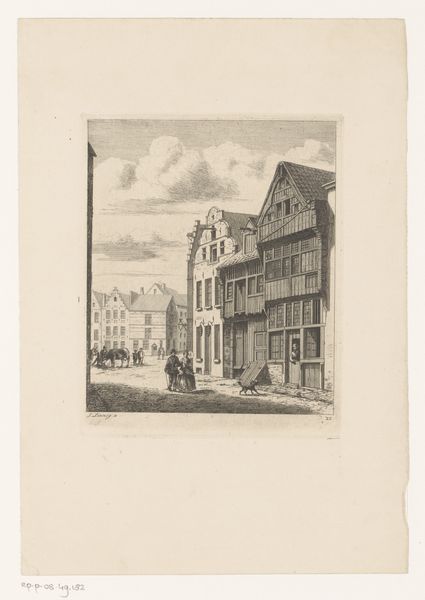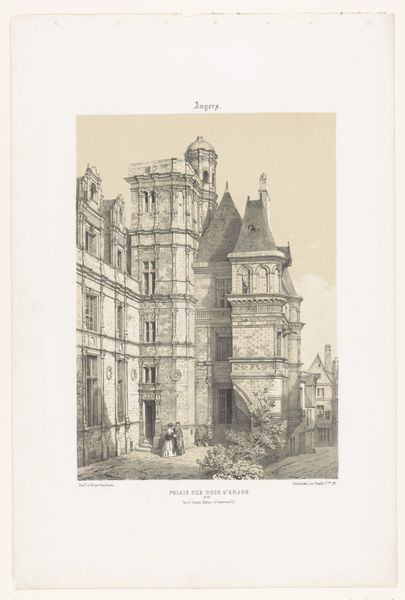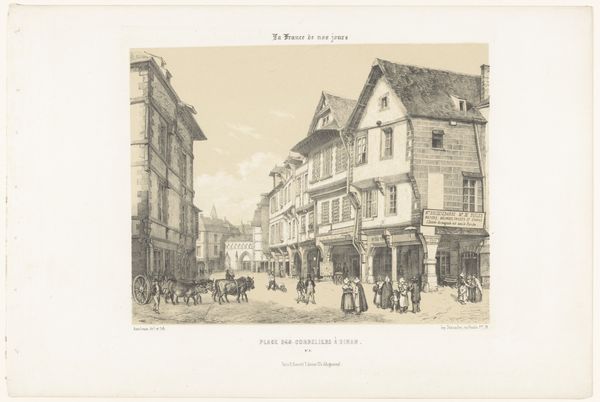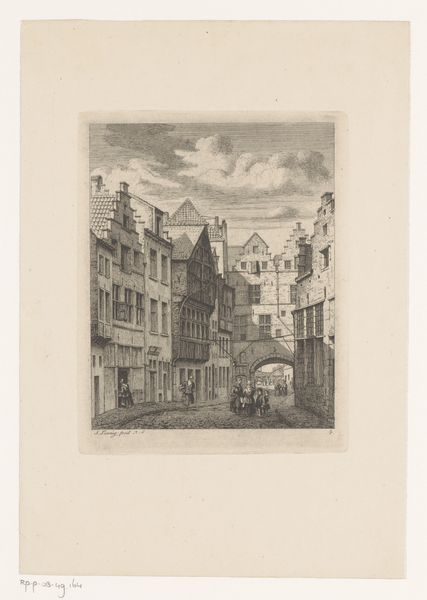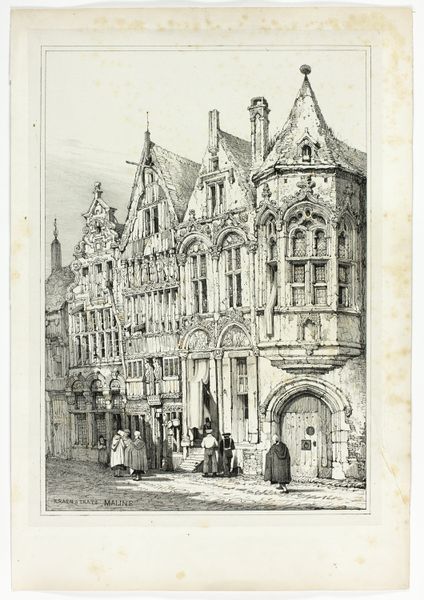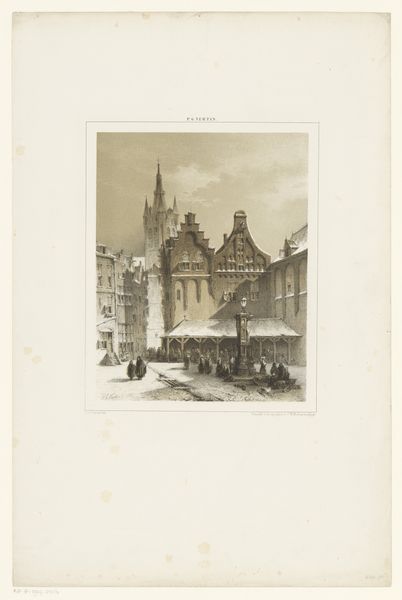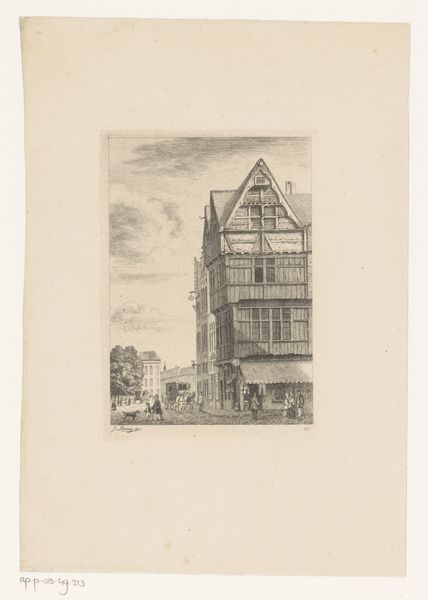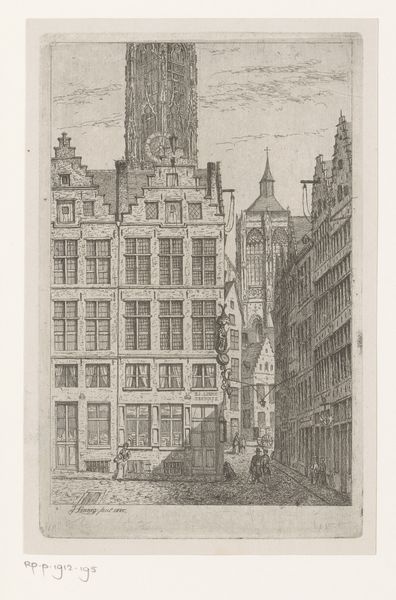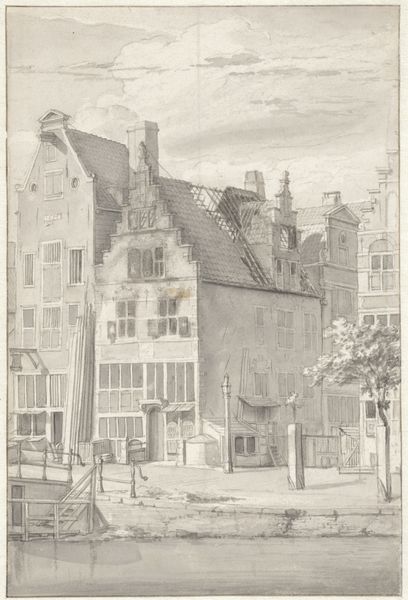
Dimensions: height 433 mm, width 291 mm
Copyright: Rijks Museum: Open Domain
Editor: This print by Léon Auguste Asselineau, "Zicht op het Maison d'Adam in Angers," created sometime between 1853 and 1856, has such incredible detail for an engraving. The building almost feels alive. What stands out to you as you examine this piece? Curator: The Maison d'Adam itself is pregnant with meaning. Adam, the first man. Consider the deliberate placement of this structure within the urban fabric, almost a visual genesis, a potent symbol of beginnings and historical continuity, don't you think? What kind of emotional chord does such historical contextualization strike within you? Editor: I hadn’t thought about it like that, but now that you mention it, the very clear, crisp lines remind me of the way history is written and remembered. Curator: Precisely. Look at how Asselineau rendered the figures in the foreground. They seem dwarfed, almost reverent in the face of this architectural presence, wouldn't you say? The people seem in awe. It evokes questions about human existence in relation to cultural monuments. The building itself embodies a collective memory. Editor: That's fascinating. The people are part of this grand history the building has lived. I'm seeing it now. The contrast makes the history all the more impressive. Curator: Exactly. The architectural elements aren't merely aesthetic; they’re cultural signifiers. Each beam, each window becomes a character in the ongoing narrative of Angers. They are visual poems reflecting human ambition and artistic skill. Editor: It’s amazing how much history and emotion can be conveyed through such precise lines and detailed representation. Curator: Indeed, we observe more than just a building. We witness history immortalized. The work helps us grasp the intersection between personal stories, built environments, and cultural legacies, encouraging reflection and appreciation of human achievement. Editor: I appreciate this detailed perspective, connecting the architecture, figures, and broader cultural story.
Comments
No comments
Be the first to comment and join the conversation on the ultimate creative platform.

